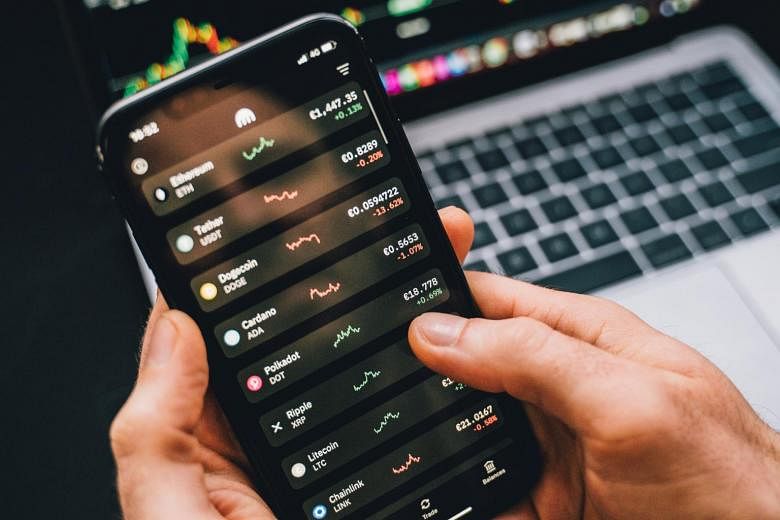SYDNEY (BLOOMBERG) - Investors are hoping the Federal Reserve can manage the path toward rate hikes as smoothly as its taper announcement, according to strategists who are cautiously optimistic the coming months will see moderate advances for yields, the dollar and equities.
The Fed on Wednesday (Nov 3) said it will begin winding down its monthly asset purchases later this month at a pace of US$15 billion (S$20.2 billion) per month, while expressing less certainty that the jump in inflation will prove temporary.
Fed chairman Jerome Powell announced a start to a reduction in bond purchases on Wednesday but said officials can be patient on raising interest rates. The Federal Open Market Committee (FOMC) decided to maintain the target range for its benchmark policy rate at zero to 0.25 per cent. The decision was unanimous.
US stocks closed at records, Treasuries retreated and the yield curve saw a modest steepening - reversing some of its recent flattening trend.
The key risks now surround rate-hike bets, with the potential that aggressive moves in that market could set off fresh turmoil in bonds.
Friday's labour report is seen as the next flash point for markets, given rates traders remain relatively aggressive about the need for Mr Powell to avoid being overly patient about hiking borrowing costs to restrain inflation. The market is already aggressively pricing in more than two hikes in 2022.
Wells Fargo strategists said: "The key takeaway to us is the Fed has introduced the possibility of accelerating, or conceivably slowing, tapering. The flexibility on tapering puts more onus on economic data, specifically inflation and employment data, to spur dollar gains on expectations of sooner/faster rate hikes. This raises the stakes for this Friday's and subsequent US employment reports."
Westpac is forecasting a first hike in December 2022. Senior economist Elliot Clarke said the rate hike cycle will be modest versus history. "Throughout the period, the chief risk to this benign view on policy will be wage gains. If supply proves insufficient for demand, then wage growth could be bid up to a level that not only offsets current inflation pressures, but also allows for additional discretionary consumption."
The Fed on Wednesday said it would reduce Treasury purchases by US$10 billion and mortgage-backed securities (MBS) by US$5 billion, marking the beginning of the end of the programme aimed at shielding the economy from Covid-19.
After reductions in November and December, "the committee judges that similar reductions in the pace of net asset purchases will likely be appropriate each month, but it is prepared to adjust the pace of purchases if warranted by changes in the economic outlook", the US central bank's policy-setting FOMC said in a statement on Wednesday following a two-day meeting.
The path sketched out would wrap the taper process up by June. The Fed has been buying US$80 billion of Treasuries and US$40 billion of MBS every month to help stimulate economic activity that was crushed in the initial pandemic lockdown and subsequent uneven recovery.
Central banks in developed economies globally are now shifting their attention to the risk of inflation as supply-chain logjams spur shortages amid strong demand. The Fed's preferred inflation measure was 4.4 per cent in the 12 months ending September, the highest in three decades and more than double the central bank's target.
"Inflation is elevated, largely reflecting factors that are expected to be transitory," officials said in the statement. "Supply and demand imbalances related to the pandemic and the reopening of the economy have contributed to sizeable price increases in some sectors."

